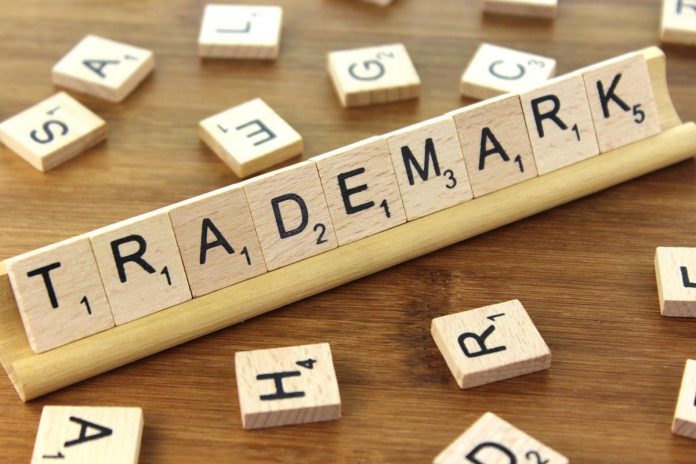This article is written by Monesh Mehndiratta, a law student at Graphic Era Hill University, Dehradun. This article first explains the meaning and object of trademarks and goes on to explain the need for trademark laws in the country. It explains the basic principles of trademark registration and provides the procedure to register a trademark online.
This article has been published by Sneha Mahawar.
Table of Contents
Introduction
Whenever someone thinks of starting his/her startup or forming a company, the first and foremost task is to think of a unique name and symbol, which is a mark of identity for the company and is registered at a later stage with the authorities. The unique name and symbol of the company help consumers recognize its products easily. What if there are two companies with the same names and symbols? One sells shoes and the other a food product. This will create a situation of confusion for the consumers and cause a heavy loss for the seller. Thus, it is necessary to have a definite symbol that marks the origin of the goods from a particular company. This symbol is different for every company and serves as the identity of the company. Such a symbol is called a trademark.
Every company is required to have its own unique trademark, and the company must register it. The article, after dealing with the meaning and object of trademarks, provides the procedure for registering trademarks online in India. It also provides the list of necessary documents and grounds of opposition for a trademark. Let us first understand the meaning and object of a trademark and why we need to register it.
What is a trademark
A unique visual representation of goods of a particular company or venture that indicates their trade origin is called a trademark. For example, the trademark ‘Bajaj’ distinguishes the products of Bajaj Electrical Ltd. from the products of Whirlpool Corporation, whose trademark is ‘Whirlpool’. It is a kind of intellectual property and, therefore, has to be protected. Section 2(1)(m) of the Trade Marks Act, 1999 defines the word ‘mark’, which includes a device, brand, heading, label, ticket, name, signature, etc., while Section 2(1)(zb) defines the word ‘trademark’.
The following are the ingredients of a trademark:
- A trademark includes a mark which may be a device, brand, heading of a brand, name, signature, word, letter, numeral, any kind of shape, etc.
- It must have the ability to be represented graphically.
- It should not be similar to any other existing trademark.
- It can include the shape of the products of the company, their combination or packaging.
- It must be used for the goods of a particular company, and there must be a connection between the goods and the people having the right and permission to use the mark.
In cases where there is similarity and misrepresentation of trademarks, one has to test whether such misrepresentation causes or is likely to cause a situation of confusion for consumers. This may vary from case to case, and if it causes any confusion, then the application for the trademark can be opposed.
Functions of a trademark
The most important function of a trademark is that it works as an identification mark for the goods and their origin. The other functions are:
- It helps in guaranteeing the quality of the goods. For example, the quality of mobile phones sold by Apple will be different from those of Samsung.
- It can be useful in advertising the product as the symbol can be easily remembered by the viewers and will attract the consumers.
- It helps in creating an image of the product in the minds of the public. For example, the letter ‘M’ helps in creating the image of tasty food sold by McDonalds and consumers can recognize its products and restaurants in the country.
- Since every trademark is unique to its company, it reduces the chances of confusion and fraud.
- It represents the goodwill of the product and its company.
Need and objective of trademark laws
A trademark aims to avoid confusion in the minds of the public and prevent instances of fraud, which is possible if there are similar trademarks. Before the enactment of any law related to trademarks, common law marks were used, but these could not be registered as there was no law governing such registration. One could easily copy the trademark of another. Once the mark was copied, the owner had no remedy, and the proceedings were time-consuming. To prevent this, the Trade and Merchandise Marks Act of 1958 was passed. But with the advancement of time and technology, the Act was replaced by the Act of 1999.
The object of the law is to provide rights and remedies to the owner of the trademark and to prevent the infringement of such trademarks. It lays down the procedure to register a trademark, the method of transfer of rights, and grounds for opposition. It also provides a list of all such marks that can be registered as trademarks.
Essentials of a trademark
Trademark registration is a necessary part of securing one’s brand name and logo. Following are the essentials of a trademark:
- A trademark, in order to get registered, must be unique and distinctive.
- An invented word is preferred over other general words as a trademark.
- In the case of a word, it must be such that it can be easily pronounced and spelled. For example, Honda, Apple, Sony, Ford, etc.
- If it is a device mark, it should be described by a single word.
- It must be spelled and written correctly.
- It should suggest the quality of goods or services.
- It must be short and precise.
- It must be attractive.
- It must adhere to all the requirements of registration.
- It should not fall into the category of marks that can not be registered as a trademark.
Importance of trademark registration
It is necessary to register a trademark so that you can easily enjoy the benefits it provides to the owner. The importance of trademark registration can be understood as:
- It provides a unique brand name and symbol to the product which differentiates it from thousands of products existing in the domestic as well as international market.
- It acts as an asset for the company and helps in the growth of the business as people recognise the products by their brand name or symbol.
- A registered trademark gives the ownership of the brand name and logo of the product to the owner who has exclusive rights to use or assign it as per his wishes.
- It is one of the easiest tools to communicate with customers. An appealing, precise, and clear logo or trademark attracts customers to itself.
- A registered trademark makes it easy for consumers to search for the product and enhances its sale.
- Once a trademark is registered, it remains forever but has to be renewed every 10 years.
- It helps eliminate unfair and unnecessary competition from the market and reduces the chances of unlawful claims of logos and brand names.
What can be registered as a trademark
According to the Act, some types of marks that can be registered are:
Service marks
It is defined under Section 2(1)(z) of the Act and includes registration of marks for any business in banking, transport, education, finance, chit funds, real estate, repair, lodging, entertainment, etc.
Collective marks
It is defined under Section 2(1)(g) of the Act. It means a trademark that is registered for goods and services by an association of persons.
Well-known trademarks
It is defined under Section 2(1)(zg) of the Act. A mark is considered well-known for registration if it is famous and well known by the public.
According to the Act, the following things can be registered as trademarks:
Name
The name of a product, brand, or business can be registered and trademarked. Even the abbreviations of a venture can be registered.
Logo or symbol
Every company or business has its own logo and symbol. This symbol is distinct and unique from all other existing companies, and serves as the identity of the company, so it can be registered as a trademark.
Tagline
In order to promote its products and services, a company creates an attractive tagline. This tagline can also be registered as a trademark so that no one else can copy the same tagline.
Other marks
Certain other marks that can be registered are colour marks, sound marks, and scent marks.
Principles of trademark registration
There are certain principles for the registration of trademarks. These are:
- No applicant can claim exclusive proprietary rights over any word or symbol. The rights and benefits given to the owner of a trademark have some restrictions which help other traders to use the marks in a bona fide manner.
- Surnames, any kind of descriptive word or names of geographical areas, cannot be registered prima facie. (Section 9)
- A trademark will not be registered if it tends to mislead the public. A deceptively similar trademark will not be registered. (Section 11)
- It is not mandatory for a trademark to indicate only one origin. There can be instances where there can be two similar marks. These can be registered subject to various limitations and conditions. (Section 12)
- According to Section 47 of the Act, a trademark can be removed from the register if it is not used.
- Since a trademark is a kind of intellectual property, it can be transferred and assigned to any other person like any other property. (Section 40 to Section 45)
- If a trademark is used by any person but is not registered, his/her rights over the mark will be protected and cannot be infringed by those who have tried to register the same trademark. (Section 34)
- According to the Act, the mark must be published, so if anyone wants to file any opposition, he/she can do so. (Section 20 and Section 21)
Online trademark registration process
In order to register a trademark online in the country, the following steps have to be followed:
Search the brand name
New companies or ventures have to search for a unique, short, and catchy name in order to get it registered as a trademark. They can also invent any new word on their own, but it must be correctly spelt and pronounced.
Preparation of application to be filed for a trademark
An application has to be prepared, which is filed online along with the necessary documents. The documents required to apply are:
- Name of applicant and his/her address proof.
- Registration proof of the business.
- Identity proof in the case of sole proprietors and address proof in the case of a company.
- Soft copy of mark.
- Proof of claim of the mark that has been proposed.
- A signed power of attorney by the applicant.
Filing the application
Applications can be filed online through the website after gathering all the required documents. After an application is filed, a receipt of acknowledgement is generated online on the government website, and the company is eligible to use the symbol of trademark (™) on the side of the brand name until the trademark is registered.
Fees
The fees for online registration are much lower than for offline registration. The fees depend on the online consultancies that help in registering the trademark. It may vary from person to person and company to company depending on the nature of the business.
Examination of applications
All the applications are examined and verified by the registrar. He makes sure that there is no similarity with the existing or pending trademarks.
Publication of a trademark
The registrar will publish the mark in the Indian Trademark Journal for opposition by the public. Anyone can file an opposition within 3 months (90 days) from the date of publication. In the case of opposition, the registrar will provide a copy of the opposition to the applicant and he will be required to submit a counter statement within 2 months. If the statement is filed, further proceedings and hearings will take place, but if he does not submit the required statement, the application will be rejected.
Issuance of a trademark certificate
If there is no opposition, the registrar will proceed to issue the trademark certificate. The status of an application can be checked online through the allotment number, which is provided in the confirmation of the application. Registration of a trademark takes some time since all the intricacies have to be met, so a person can check the status of an application within 18-24 months.
Registration
Once the registrar issues the trademark registration certificate, it is clear proof that your trademark has been registered. The registration of a trademark is valid for 10 years in India and can be renewed as soon as the period expires. After the registration is complete, the symbol ® can be used by the company in its brand name.
Steps to register/ sign up for a trademark
You can easily apply for the registration of a trademark by filing the application online on the website ipindiaonline.gov.in. If you are a new user, you can follow these steps:
Step-1
Visit the above mentioned website. A dialogue box will appear.
Select the applicant as proprietor, agent, or attorney. If you have a code, enter it or else search for it.
Step-2
In case you do not have any code, you can click on search and then write the name of the proprietor and click on ‘submit’.
Step-3
Click on the ‘Add new’ option.
Step-4
Another dialogue box will appear which will ask for certain information.
Fill in the details like name, address, nation, phone number, trade description, service address, email, legal status, etc. and click on ‘Submit’.
Step-5
As soon as you submit the details, the portal will give you a code to proceed with the application. This code will help you access your application further.
Step-6
After you proceed with the code, the portal will ask for a digital signature and user details. Click on the ‘Register’ option after filling in all the required information. Your application will be registered, and then you have to submit the required documents and fee to get your application processed. In this way, you can easily register for a trademark.
Marks that cannot be registered
Sections 9 and 11 of the Act provide that a mark will not be registered as a trademark if:
- It tends to deceive and mislead the public.
- A trademark that hurts the religious feelings of the people.
- A mark which is prohibited under the Emblems and Names (Prevention of Improper Use) Act, 1950.
- A mark in the form of the shape of goods which is purely functional and gives substantial value to the goods.
Difference between registered and unregistered trademarks
| Point of difference | Registered trademark | Unregistered trademark |
| Meaning | It is a trademark which has been registered as per the provisions of Trade Marks Act, 1999. | A trademark which is not registered under any law is called an unregistered trademark. |
| Act | It is governed by the Trademarks Act, 1999. | It is governed by the common law of the country. |
| Duration of trademark | Once the trademark is registered, it is protected for 10 years and can be renewed. | No such duration because it is not registered. |
| Burden of proof | If the legality of a trademark is challenged, the burden of proof lies on the party challenging it. | The burden of proof lies on the owner of the trademark to prove its legality. |
| Validity of trademark | If the trademark is registered, it is the conclusive proof that it is valid. | Owner has to prove the validity of the trade mark. |
| Symbol | A registered trademark can use the symbol ® if it is registered or ™ if the application has been made for registering a trade mark. | Unregistered trademarks may use ™ but not ® . |
| Protection | Registering a trademark provides legal protection. | No protection to unregistered trademarks. |
Advantages of registering a trademark
Legal protection
The registration of a trademark provides legal protection to the owner of the unique name, symbol, brand, or any picture of the company. If the trademark is copied or used by someone else, then the owner can file a suit against the person or ask for compensation. It also reduces the chances of illegal and unlawful claims in the market.
Rights to the owner
According to Section 28 of the Act, the owner of a registered trademark has various rights. These are:
- Exclusive rights to use the trademark and no one else can infringe on this right.
- Right to seek remedy in case of infringement of trademark.
- In case of identical trademarks, the owners do have any right against the mark or other owner having a resembling trademark but have equal rights individually for their own trademark.
- A trademark can be assigned to anyone by the owner according to Section 37 of the Act.
- If the owner wants to make any changes to the trade mark he can do so by giving an application to the registrar.
Difference in the goods of other companies
A registered trademark is known to everybody and can be easily recognised by consumers and buyers. This helps them distinguish the product with registered trademarks from other products in the market and further helps in the growth of the business.
Asset for the company
A trademark serves the purpose of being an asset to the company. Since it is a kind of intellectual property, it can be sold, contracted, or given as a franchise. It also helps the business or company in gaining popularity for its product by advertisement or brand name.
Builds trust and promotes the product
If the trademark is registered, it is presumed that the company is not a sham or cloak. Thus, it helps in building trust in the market as a result of which the product is promoted. It also acts as a catalyst to attract consumers.
Global recognition
Since a trademark is registered for 10 years, it gives an opportunity to expand the business or product in international markets globally. It can be enforced against other similar trademarks and thus eliminate unfair competition from the market.
Cost-effective
The process of trademark registration is cheap in India. So the owners can invest their money in building the brand name and promoting the products in the market. One can easily register a trademark and take the benefits arising from it.
Conclusion
A trademark is a form of intellectual property and so has to be protected. It is a unique and distinct name or symbol possessed by every company. It helps in the smooth running of businesses as it prevents unnecessary confusion in the minds of the public. In order to take advantage of the trademark, it has to be registered as per the Act of 1999. The article provides the procedure to register a trademark online, which can be done with the help of any online consultancy. This will save time and money for the applicant as the cost of registering the trademark online is much cheaper than registering it manually. With the advancement of technology, everything has moved to an online mode. Thus, it is necessary to safeguard the owners and proprietors from problems that arise because of the e-filing of applications and the registration of trademarks, if any.
Frequently Asked Questions (FAQs)
Who can file an application for the registration of a trademark?
Any individual, sole proprietor, company, or LLP can apply for the registration of a trademark. They can also apply through their agents and legal representatives.
What are registered and unregistered trademarks?
Registered trademarks are trademarks that are registered under the Act and provide rights to the owner to use the mark exclusively for the goods or services of his/her company for which it has been registered. These trademarks are recognised, and no one can copy them or use them illegally. Unregistered trademarks are not registered, and there is no legal protection or recognition.
What are the grounds for refusal for the application for registration of a trademark?
There are 2 types of grounds for refusal. These are:
- Absolute grounds
- Relative grounds
Absolute grounds – Section 9 talks about such grounds. These are:
- Trademarks lacking any distinctive character.
- Marks indicating quality or any other description of goods or services.
- Marks that have become customary or common.
Relative grounds – Section 11 provides such grounds. These are:
- Marks that are identical and similar to any existing trademark, along with similarity in goods and services.
- Marks that are similar and identical to the existing trademark but the goods or services are different.
References
- https://cleartax.in/s/registered-unregistered-trademark-differences
- https://ipindiaonline.gov.in/trademarkefiling/user/frmNewRegistration.aspx
- https://cleartax.in/s/registered-unregistered-trademark-differences#:~:text=The%20registered%20trademark%20owner%20can,not%20the%20’R’%20symbol.
- https://corpbiz.io/learning/advantages-of-trademark-registration/
- https://cleartax.in/s/trademark-registration-procedure-india
- https://ebizfiling.com/blog/necessity-importance-of-trademark-registration-in-india/#Necessity_Importance_of_Trademark_Registration
- https://www.setindiabiz.com/learning/exclusive-rights-of-trademark-owner
Students of Lawsikho courses regularly produce writing assignments and work on practical exercises as a part of their coursework and develop themselves in real-life practical skills.
LawSikho has created a telegram group for exchanging legal knowledge, referrals, and various opportunities. You can click on this link and join:
Follow us on Instagram and subscribe to our YouTube channel for more amazing legal content.

















